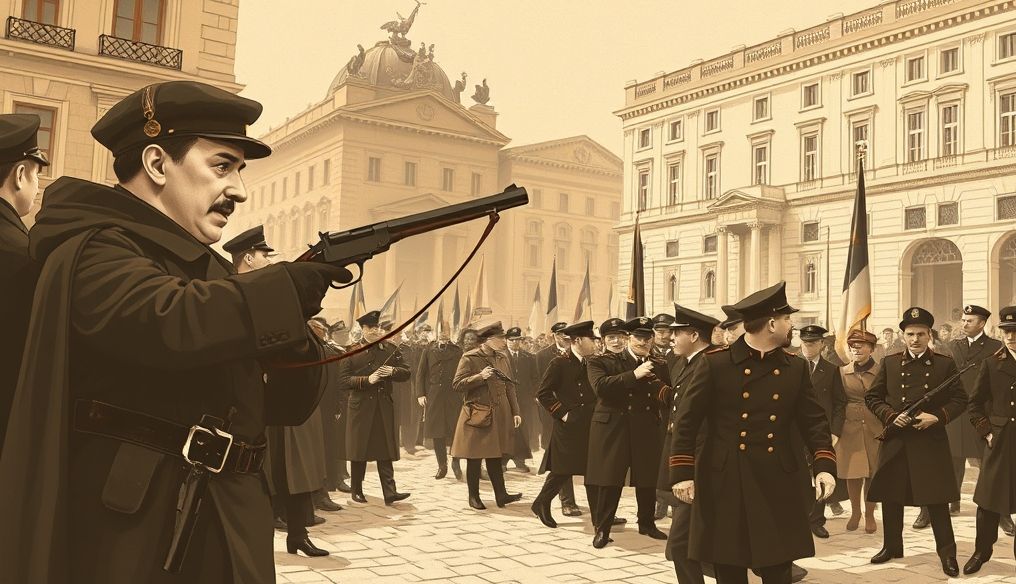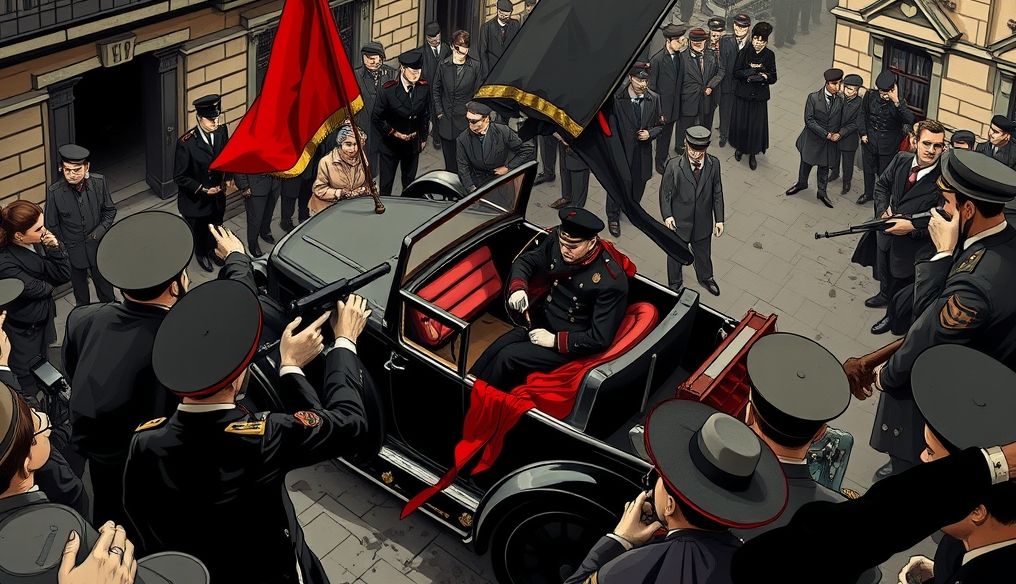Introduction: The Years Before the War - A European Powder Keg
World War I, which erupted in 1914, was not a sudden event. It was the culmination of decades of escalating tensions between the major European powers. Early 20th-century Europe can be likened to a powder keg waiting for a single spark to ignite it.
- Rising Nationalism: Nationalism was a powerful driving force in Europe. In countries like Germany and Italy, nationalism contributed to the unification of fragmented states. In multi-ethnic empires such as the Austro-Hungarian and Ottoman empires, nationalism led to separatist movements threatening to undermine their stability.
- Colonial Rivalry: European powers competed fiercely for control of colonies in Africa and Asia. This colonial rivalry led to friction and conflicts, especially between Britain, Germany, and France.
- Arms Race: Europe witnessed a frenzied arms race, with each country seeking to build a stronger army than its neighbors. This race increased suspicion and distrust between nations.
- Complex Alliance System: Europe was governed by a complex system of alliances, where countries pledged to defend each other in the event of an attack. This system, intended to maintain peace, made it more prone to slipping into war.
Chapter 1: Assassination of Archduke Franz Ferdinand - The Initial Spark
On June 28, 1914, Archduke Franz Ferdinand, heir to the Austro-Hungarian throne, and his wife Sophie were assassinated in Sarajevo, the capital of Bosnia. The assassination was carried out by Gavrilo Princip, a Bosnian Serb student and member of the Serbian nationalist organization "Black Hand." This assassination served as the spark that ignited World War I.
Who was Franz Ferdinand?
Franz Ferdinand was the clear heir to the throne of the Austro-Hungarian Empire. He was known for his reformist views, believing the empire needed radical changes to maintain its unity.
Why was he assassinated?
The "Black Hand" organization sought to unite all Serbs in one state and strongly opposed the annexation of Bosnia to the Austro-Hungarian Empire. The assassination of Franz Ferdinand aimed to weaken the Austro-Hungarian Empire and ignite a revolution among Serbs in Bosnia.
Chapter 2: Chain Reactions - From Sarajevo to Total War
After the assassination of Franz Ferdinand, the Austro-Hungarian Empire took a tough stance against Serbia. Austria-Hungary sent an ultimatum to Serbia with harsh terms, including allowing Austrian investigators to investigate the assassination on Serbian territory. Serbia rejected some of these terms, prompting Austria-Hungary to declare war on Serbia on July 28, 1914.
Russia's Entry
Russia was an ally of Serbia and pledged to defend it in the event of an attack. After Austria-Hungary declared war on Serbia, Russia announced a general mobilization of its army, alarming Germany.
Germany's Entry
Germany was an ally of Austria-Hungary and feared that Russia's intervention would lead to a widespread war. Germany sent an ultimatum to Russia demanding it cease mobilization, and when Russia refused, Germany declared war on Russia on August 1, 1914.
France and Britain's Entry
France was an ally of Russia and pledged to defend it in the event of an attack. After Germany declared war on Russia, France announced a general mobilization of its army. Germany invaded neutral Belgium on its way to France, prompting Britain to declare war on Germany on August 4, 1914.
Chapter 3: Deeper Motives - Beyond the Assassination
Although the assassination of Franz Ferdinand was the spark that ignited World War I, there were deeper motives that contributed to its outbreak:
- Economic Rivalry: Germany sought to expand its economic influence in Europe and the world, alarming Britain and France.
- Naval Rivalry: Germany sought to build a strong naval fleet to rival the British fleet, alarming Britain.
- Territorial Ambitions: Germany sought to expand its territories in Europe and demanded new colonies in Africa and Asia.
- Desire to Prove Power: Germany sought to prove its power and status as a great power in the world.
Chapter 4: Competing Alliances - Central Powers and Allied Powers
During World War I, European countries were divided into two competing camps:
- Central Powers: Germany, Austria-Hungary, the Ottoman Empire, and Bulgaria.
- Allied Powers: Britain, France, Russia, Italy (joined in 1915), and the United States (joined in 1917).
Chapter 5: The Course of the War - From Trenches to Armistice
World War I was characterized by trench warfare on the Western Front, where soldiers dug long, interconnected trenches stretching from Belgium to Switzerland. Life in the trenches was harsh and appalling, with soldiers constantly exposed to shelling, sniping, and disease.
On the Eastern Front, the war was more mobile, with German and Austro-Hungarian forces fighting fierce battles with Russian forces. The Russian Empire collapsed in 1917 due to the Bolshevik Revolution, and Russia withdrew from the war.
The United States entered the war in 1917 on the side of the Allied Powers, giving a strong boost to the Allied effort. In 1918, German forces began to collapse, and an armistice was signed on November 11, 1918, ending the war.
Chapter 6: Results and Repercussions - A Changing World
World War I was a disaster by all accounts. Millions of people were killed, entire cities and villages were destroyed, and the political map of Europe was radically changed.
- Human Losses: About 9 million soldiers and civilians were killed in World War I.
- Economic Losses: The war devastated the economies of European countries, leading to inflation and rising prices.
- Political Changes: The Austro-Hungarian, Ottoman, and Russian empires collapsed, and new states were created in Eastern and Central Europe.
- Treaty of Versailles: The Treaty of Versailles imposed harsh terms on Germany, leading to widespread resentment among Germans and paving the way for the rise of Nazism.
Chapter 7: Lessons Learned - Have We Learned from the Past?
World War I is a tragic reminder of the horrors of war and its devastating consequences. We must learn from the past and work to prevent the recurrence of such a disaster in the future. Among the most important lessons learned:
- Importance of Diplomacy: Countries should seek to resolve conflicts through diplomacy and dialogue rather than resorting to war.
- Danger of Extreme Nationalism: Extreme nationalism can lead to intolerance, hatred, and violence.
- Importance of International Cooperation: Countries should cooperate with each other to solve common global problems.
Chapter 8: World War I in Collective Memory - A Lasting Legacy
World War I remains present in the collective memory of many countries. It is commemorated through memorials, museums, books, and films. World War I remains a warning against the horrors of war and the need to strive for peace.
Conclusion: The assassination of Archduke Franz Ferdinand was the spark that ignited World War I, but deeper motives such as economic and colonial rivalry and rising nationalism played a crucial role in its outbreak. We must learn from the past and work to prevent the recurrence of such a disaster in the future.




